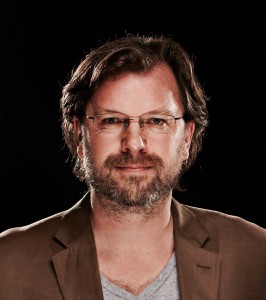
Tim Burke first boarded the Hogwarts Express for the second film in the Harry Potter series, The Chamber of Secrets, signing on as a VFX supervisor for post-house The Mill. Since then, he’s worked in supervisorial roles in all subsequent installments, rising to senior visual effects supervisor for the franchise’s two-part finale, Harry Potter and the Deathly Hallows.
But much has changed in how the on-screen magic is conjured since Harry, Ron and Hermione were young. “We created the world of Harry Potter whole,” for the two-part finale, including, or perhaps especially, the concluding section which features, primarily, the climatic battle between Harry and Voldemort – and their respective forces – to determine the future of the wizarding world.
More specifically, he says, it was “all created digitally,” which might not seem like much of a surprise until you consider that much of the Hogwarts terrain – exteriors and interiors – had actually been created before, for previous films.
By and large, the production “didn’t use assets” from the previous films, sometimes because they couldn’t. Giant spiders, for example, who inhabited the Hogwartian forest were made by a company that doesn’t exist anymore.
And the actual Chamber of Secrets – revisited in the conclusion – was originally “a big set,” which had been struck long ago. Here, Burke’s job was to “rebuild it from scratch,” referencing the old film.
Only this time, it was primarily built inside circuit boards. But over the life of the “Potter” films, film magic has changed, too. “Fantastic tools have developed over the last few years,” Burke notes, many providing photo real textures that didn’t exist back when a chamber of secrets had to be fashioned out of actual wood.
And some of those “assets” stradled both the real and rendered worlds. In making Hogwarts Castle itself, however “we used the actual model as the basis for building the CG version.” This included adding the back of the school, which had never previously been rendered.
It also involved a strategy of using lower resolution shots for wide angles, and “high resolution for close-ups; (when they’re) flying in windows.” This wasn’t the only tweak to the pipeline, as each vendor could make low-res versions of sequences with the formerly green-screened characters in front of them and pass them back within 24 hours, a sort of in-production version of previs, which helped, among other things, to “dictate lighting” – and further refine it – in the CG envrionments.
Though previs in the tradtional “early” sense was also used. In fact, some of the previs for Part II of Deathly Hallows was done earlier than Part One.
Burke notes that the two are “distinct films,” even though they were filmed together. The first is “more of a road movie,” compared to the battle set pieces of the conclusion.
Of overseeing effects for so many years of the Potter saga, Burke concludes that “the whole process is as much an evolution as everything else” – from the stories themselves, and the actors’ ages, to say nothing of the gear used to film those stories and transmit them on the screen.
Burke allows that no one knows where the next Harry Potter is coming from, but currently finds himself in pre-production for a potential set of films on an even older literary character – King Arthur.
One suspects that the rendering of virtual castles will remain a handy talent for the foreseeable future.





